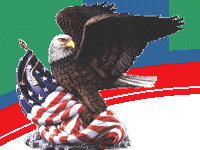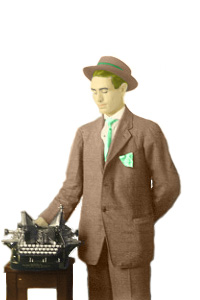
|
| 
|

|
| 
|
 |
 |
|
Oliver Model No. 5
| ||||||||||||||
By Shannon L. Johnson, using the Analysis of Typewriters format as published in the Business Machine and Equipment Digest.
![]() his model was introduced in 1907, based on third party serial number lists, and patents. One patent in particular, U.S. Patent No. 834,565 (October 30, 1906), follows the base form factor associated with the No. 5. and its semi-identical twin, the No. 6. It is not known what year the No. 6 was introduced. The most notable difference between the Nos. 5 & 6 and its predecessors is the enclosure of the Key-Lever Standards (Under Side View, B3) and most of the Key-Levers length. The most obvious difference between Nos. 5 & 6 and later models is the openness of the keyboard compared to later models where the base wraps around the keyboard.
his model was introduced in 1907, based on third party serial number lists, and patents. One patent in particular, U.S. Patent No. 834,565 (October 30, 1906), follows the base form factor associated with the No. 5. and its semi-identical twin, the No. 6. It is not known what year the No. 6 was introduced. The most notable difference between the Nos. 5 & 6 and its predecessors is the enclosure of the Key-Lever Standards (Under Side View, B3) and most of the Key-Levers length. The most obvious difference between Nos. 5 & 6 and later models is the openness of the keyboard compared to later models where the base wraps around the keyboard.
The regular model, No. 5, has 28 keys while the No. 6 has 32, to accommodate European languages. The No. 5 and the No. 6 were produced at the same time but do not share the same serial numbering scheme, the No. 5 continues numbers from the No. 3, while the No. 6 uses an unrelated "D" series. The No. 6 is found mostly in Europe while No. 5's are relatively common in the United States. All keys have the standard distance between each, making this model suitable interchangeably with other office typewriters once comfortable with the double-shift mechanism. It came standard with a 9-inch carriage and could be ordered with longer carriage-rails to accommodate longer carriages. Oliver designed their carriages to be remarkable easy to remove allowing for multiple carriages for different tasks (i.e., stenciling, single page, multiple carbons, index cards, etc.) to maximize type slug life time. Various carriage shift mechanisms were implemented over the life of this model, with left hand shift keys, left hand line space and carriage return Thumb-Wheel, standard 1-color ribbon with manual reverse; variable line spacer on the left side of carriage; and carriage release lever at both ends of carriage. The back-spacer key is situated below and to the right of the carriage on later Nos. 5 & 6.

Specifications of Model Nos. 5 & 6
General Features: Standard size, down stroke, double (carriage) shift, visible writing. May or may not have case, usually oak base and tin lid with leather handle; leather cases where available but they may not have survived. Cleaning tools and basic instructions where included with every new machine.
Keyboard: Three rows. The regular model has 28 keys writing 84 characters; the No. 6 has 32 keys writing 96 characters, up to four keys could have been "dead" (i.e., these four keys are not connected with the spacing mechanism and are used for language accents), 28 "live" keys being needed for English alphabet. Left hand shift key with left hand shift lock and release. Back space lever situated in front of right side of carriage. Tab key and the right margin release key are located between the type-bar towers, above the keyboard. Left margin release key found above and to right of keyboard.
Carriage: Interchangeable, mounted on roller bearings; standard correspondence model, takes paper 10 inches wide, writing a line 8-1/2 inches long: rotary escapement; paper feed rollers extend entire length of carriage; inbuilt tabulator operated from single key above keyboard. Line space and carriage return operated from left platen knob with an adjustment for single, double or triple line spacing and ratchet release. Back spacer operated from lever on right side of machine: variable line spacer; adjustable paper fingers. It is not widely known whether Oliver could/would be build the carriage to move from left to right to write Hebrew, Arabic, and such languages.
Printing Mechanism: Type bars of distinctive "U" shaped or arch design are mounted on either side of the printing point, held at both ends of the axis and strike downward on the platen.
One-color, nine-sixteenths inch ribbon with manual reverse and stencil throw-off. An indicating device denotes the exact print point, moving out of the way with the downward stroke of the type bar.
Construction: Mostly enclosed base. Size of machine, 15-1/2 x 14-3/8 x 11-1/2 inches; outside dimensions of case, 16 x 15-1/8 x 12 inches. Weight: ?? pounds without case; ?? pounds with case. Finish: Olive green enamel or nickel plated base, keys where either basic white (most common), basic black or molded celluloid covers over basic blank keys, with nickel trim. Known type faces: Standard Pica Type, Elite Type, large Roman Type a/k/a Preachers Type, or Printype (which was introduced with this model in 1912).
![]()
![]()
Oliver Tribute Index
Serial Numbers — Model No. 3 — Model No. 5 — Company History — Printype — Ruling Devices
Main Index
S.L. Johnson Typewriter Page — Corona Tribute — Oliver Tribute


|
All indicated and non-indicated trademarks, registered trademarks, and copyrighted material are the property of their respective companies (owners). Their appearance and use here is not an endorsement by them of this site, but an endorsement by this site of them. All other text, images, html, et al, Copyright © 1999-2003 Shannon Johnson Email me your questions or comments, "[TW] -" should be in the subject |